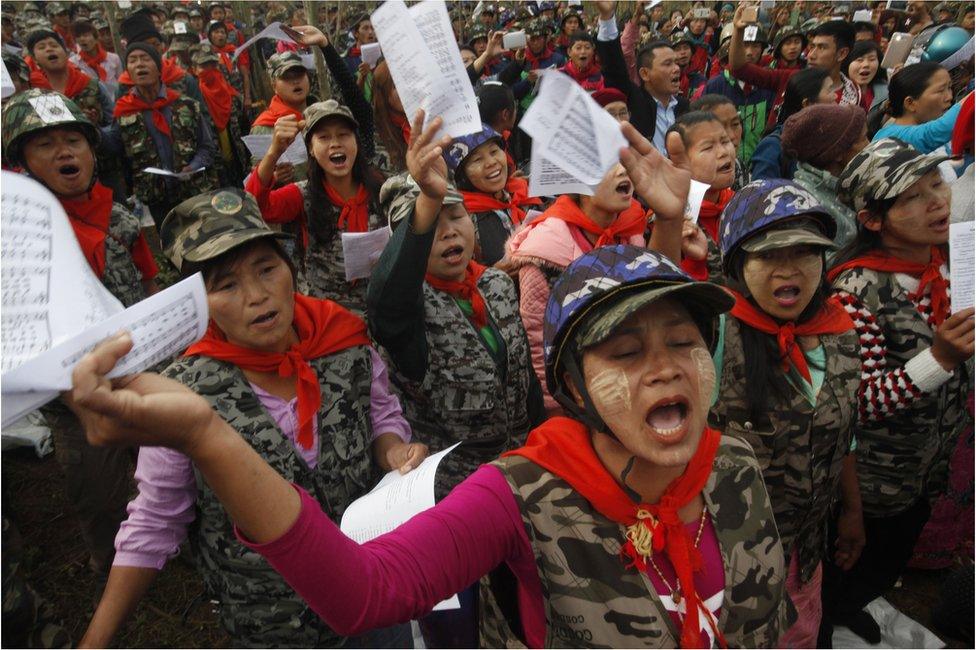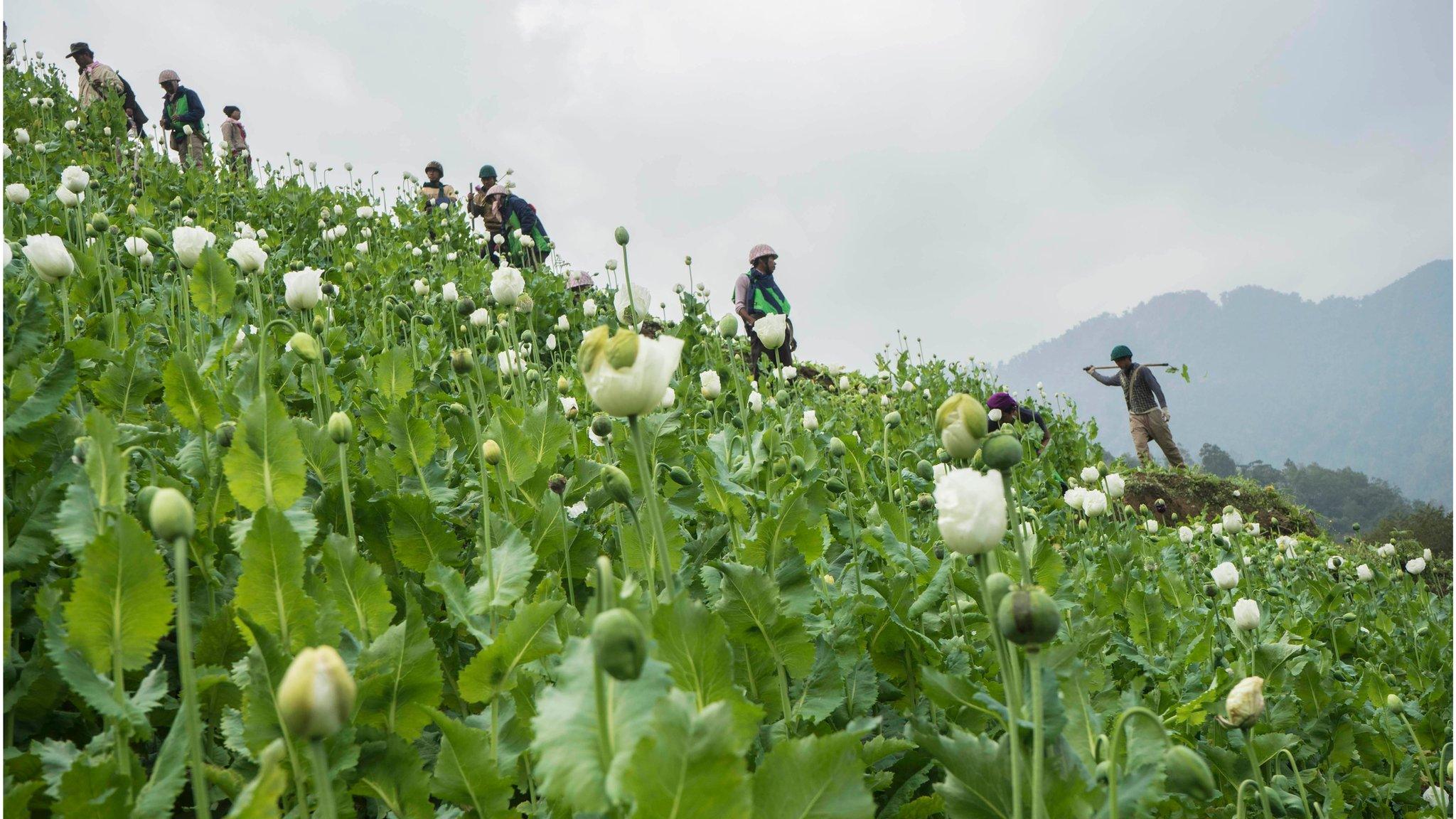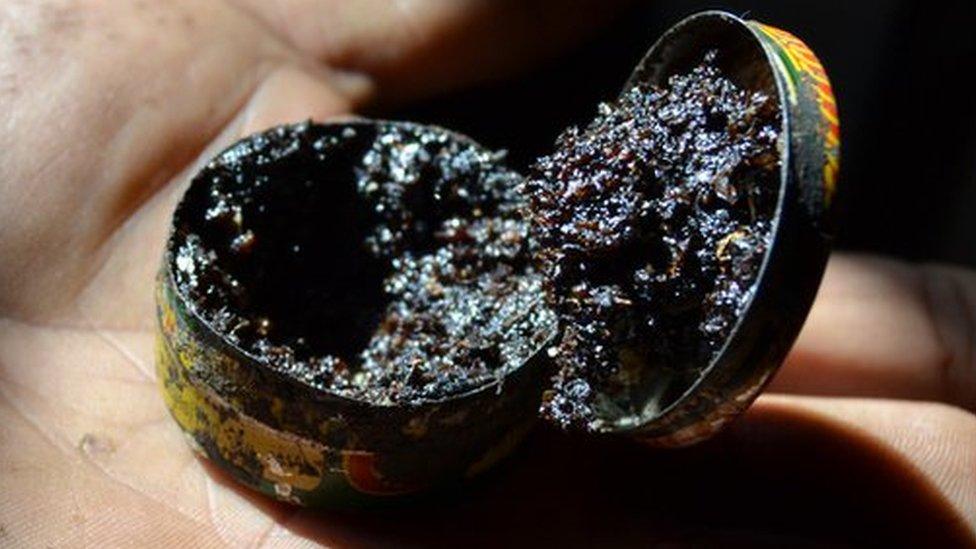Clashes erupt in north Myanmar over opium poppy fields
- Published

About 3,000 activists with Pat Jasan had been gathering at a checkpoint in Kachin state
Clashes have erupted in northern Myanmar between farmers and Christian anti-drug vigilantes attempting to destroy opium poppy fields.
The vigilantes had earlier been locked in a stand-off with security forces, who have been monitoring the conflict.
Activists from the Baptist church-connected Pat Jasan group said three people were injured in an ambush, and farmers were holding about 30 others.
Myanmar is the world's second largest producer of opium, external.
Over the past week at least 3,000 activists with the militia-inspired Pat Jasan have been camped out at an army checkpoint in Kachin state demanding to be let through.
Read more: China's drug habit fuels return of the Golden Triangle

Earlier in February the vigilantes destroyed a poppy farm near Lone Zar village in Kachin
Burmese media report that the stand-off ended when authorities finally allowed the activists to clear some poppy fields on Wednesday. The BBC understands the Kachin state government negotiated their passage.
The vigilantes then engaged in skirmishes with farmers who have vowed to protect their fields.
Myanmar has promised to eradicate opium production, but growing and smuggling the drug remains a key source of income for farmers, rebel groups, militia and the Burmese army.

Who are Pat Jasan?

Pat Jasan members on patrol in the capital of Kachin state
Pat Jasan formed two years ago by powerful Kachin Baptist Church
Boasts 100,000 anti-drugs activists, largely ethnic Kachin
Group says region blighted by drugs use
Carries out patrols apprehending offenders - reports of public floggings of drug dealers, who are taken to faith-based rehabilitation centres or the police
Full-scale village raids carried out by Pat Jasan involving several hundred people wearing camouflage jackets and brandishing batons - authorities want them to wear civilian clothes

Pat Jasan members and detainees share a meal together

Punishments include isolation - this man is restrained in his room after trying to escape

Myanmar launched a 15-year plan to stamp out cultivation in 1999 - a deadline since extended to 2019.
In recent years, Myanmar's army has clashed with ethnic minority rebels in Shan and Kachin states where poppy production is widespread.
The army, rebels and militias have been accused of taking a poppy tax from farmers.

Opium has traditionally been used as a medicine to treat diarrhoea, dysentery and other ailments.
But over the last decade commercial poppy production has taken hold in Myanmar, with demand from China, but also Australia and Japan, helping to fuel this trend.
The United Nations Office on Drugs and Crime (UNODC) said in its Southeast Asia Opium Survey 2015 that the opium poppy grown in Myanmar and Laos had been refined into about 73.1 tonnes to 82.3 tonnes of street-quality heroin. It noted that transnational organised crime groups were making huge profits from the product.
Until the end of the 20th Century, Myanmar, which was part of the so-called "Golden Triangle" with neighbouring Laos and Thailand, was the largest supplier of opium. The region was then overtaken by Afghanistan.

Photos of poppy clearing operations are on display at Pat Jasan headquarters in Myitkyina
- Published21 February 2016

- Published17 September 2015
